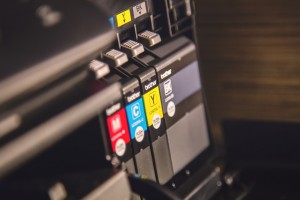The efficiency in use of printing ink could make a big change in printing costs. One of the best ways to save on your trips to the ink toner store is by good document production. This means looking for the best font, margins, spacing and so on. The type and size of font can impact on ink usage, as shown in a non-scientific study by Suvir Mirchandani from Pittsburgh. He claimed that the government can save $400 million in printing costs by using Garamond font. Typographers claim while this may not be necessarily true, font does indeed affect ink usage.
Eco-fonts
Fonts can be the same size (point) but have different thickness. For instance Times New Roman point 11 will be thinner than Broadway point 11. Thin, condensed and narrow fonts are more economical than other fonts of same size. Fonts that are non-serif are also more economical than serif fonts as there are no flourishes to add to the ink needed.
When combined with other cost-cutting measures like ink toner recycling, eco fonts can save good money. Some good examples of eco-fonts are;
Century Gothic
This simple font from way back is designed for readability. The thin letters make ink usage minimal. The only downside is that it is a bit wide and could negate its advantages if used in bulk printing. It is ideal for printing few pages.
Courier
This retro looking font was designed for usage on typewriters with ink usage in mind. The good thing with Courier is that it is thin but wide which improves readability without increasing font.
Garamond
As mentioned above, several typographers have claimed this font is the most economical in ink usage. The font is narrow and thin meaning more words will fit on a page compared to other fonts. The downside is that without good spacing between the lines it can appear too squeezed.
Brush script
This font is appropriate for decorative writing, headlines, and logos. You would expect the curves and curlicues to use more ink than say Times New Roman. Surprisingly, it is more economical. The downside is that you cannot use it for a whole document which makes its economy unnoticeable.
Ryman Eco
The designers of this font claim it uses 33% ink than standard fonts like Courier. This has been achieved by making the font hollow. The hollows cannot be seen in standard sizes 8 -11, but are more apparent when the font is enlarged say point 24.
Ecofont
This font is designed with holes in the letters. These holes are not visible in standard size just like with Ryman Eco. It also comes with special software. When used together, the designers claim it can save 50% more than standard fonts.


